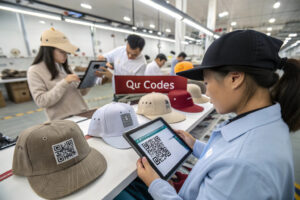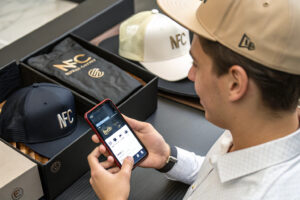Ron, like many global hat buyers, knows the pain of customs delays. Whether it's mislabeled boxes, incorrect HS codes, or missing documentation, one small mistake can hold up a 10,000-piece cap order for days—or even weeks—at port.
To avoid customs delays when shipping hats from China, importers must prioritize clear documentation, compliant packaging, proper classification, and proactive communication with both their supplier and freight forwarder.
At Global-Caps, we’ve optimized our shipping systems to help clients avoid delays, penalties, and missed seasonal launches. Here’s what we’ve learned.
What documents are essential for smooth customs clearance?
Customs documentation is like a passport for your goods. If anything is missing, inconsistent, or poorly described, customs will stop your shipment—even if everything else is perfect.
To ship hats from China without customs delays, your supplier must provide accurate commercial invoices, packing lists, HS codes, and country of origin statements.

What must be included in a commercial invoice?
A complete and acceptable invoice includes:
- Full product description (e.g., “Cotton Baseball Cap with Logo Embroidery”)
- Quantity per SKU
- Unit value and total value
- Incoterms (e.g., FOB Ningbo)
- Shipper and consignee details
- Accurate HS code: typically 6505.00.30.00 or 6505.00.80.00 depending on hat type
We double-check all invoices against U.S. CBP valuation guidelines to prevent value-related hold-ups.
Why is country of origin declaration so important?
Customs need to verify tariff eligibility and apply the correct duty rate. Falsifying or omitting this—especially amid U.S.-China tariff scrutiny—will cause detentions. Our hats are properly marked and supported with Form A or FTA certificates when routed through Vietnam, Cambodia, or bonded warehouses.
How does packaging and labeling affect customs clearance?
Even the best documentation won’t help if your cartons don’t match. Customs often check for weight discrepancies, improper labeling, or undeclared items during physical inspections.
Hats should be packed in customs-friendly cartons with external labels showing SKU, quantity, weight, and origin. All individual units must be marked “Made in China” (or other accurate country of origin).

What are common labeling mistakes?
- Cartons missing net/gross weight
- SKUs not matching commercial invoice
- No clear COO on inner or outer packaging
- Using English only when bilingual (e.g., China → Middle East) is required
We follow GS1 barcode standards and use pre-inspection checklists before shipping. Our QR code system also links to digital packing lists for smoother clearance.
How do we prepare for inspection?
We run AQL 2.5 pre-shipment inspections, photographing all packaging and sharing reports with freight partners. This aligns with requirements from platforms like QIMA or Intertek, reducing customs queries.
How should hats be classified to avoid delays or fines?
HS (Harmonized System) codes tell customs what you’re shipping—and they must be 100% accurate. Misclassification leads to penalties, audits, or reclassification delays.
Use the correct HS code based on hat type, material, and construction. For U.S. imports, hat classification can affect not only duty rates but eligibility for exclusions or FTA benefits.

What are common HS codes for hats?
| Hat Type | Common U.S. HTS Code | Duty Rate |
|---|---|---|
| Baseball Cap | 6505.00.30.00 | 7.5% |
| Straw Sun Hat | 6504.00.60.00 | 5.7% |
| Knitted Beanie | 6505.00.90.90 | 14.9% |
| Felt Fedora | 6505.00.08.00 | 10.1% |
Global-Caps uses CBP binding rulings to verify classification. You can also reference HTS Search for latest tariffs.
What happens if the HS code is wrong?
You may face:
- Reclassification and duty reassessment
- Customs fines or seizures
- Entry rejections or CBP holds
We advise buyers to let us handle classification. Our team works with customs brokers to pre-submit classifications for large-volume shipments.
How can freight forwarders help avoid customs delays?
Customs clearance isn’t just about documents—it’s about logistics timing, port booking, and real-time communication. That’s where experienced forwarders come in.
A seasoned freight forwarder prevents customs delays by coordinating documentation, choosing the right ports, and responding to customs inquiries on your behalf.

What services reduce clearance risks?
- Pre-clearance audits
- DDP services (duty paid shipping)
- Customs bonded warehouse storage
- Port-specific entry preference (e.g., LA/LB vs. Houston)
We work with partners like GeeseCargo and Flexport to provide smooth DDP shipping from China to over 80 countries.
How can DDP simplify customs?
With Delivered Duty Paid (DDP), we act as the importer of record, handling duty/tax payments and documents upfront. For hat buyers, this means:
- Zero customs involvement
- No surprise fees
- Shorter clearance time (often 48 hours at port)
DDP is particularly recommended for U.S. eCommerce sellers or seasonal buyers with tight launch windows.
Conclusion
Shipping hats from China without customs delays is fully achievable—if you plan proactively. The key is choosing a supplier who understands documentation, packaging, classification, and forwarder collaboration. At Global-Caps, we don’t just produce headwear—we ensure it moves through borders smoothly, legally, and on time. With us, your hats arrive not just in style, but right on schedule.







